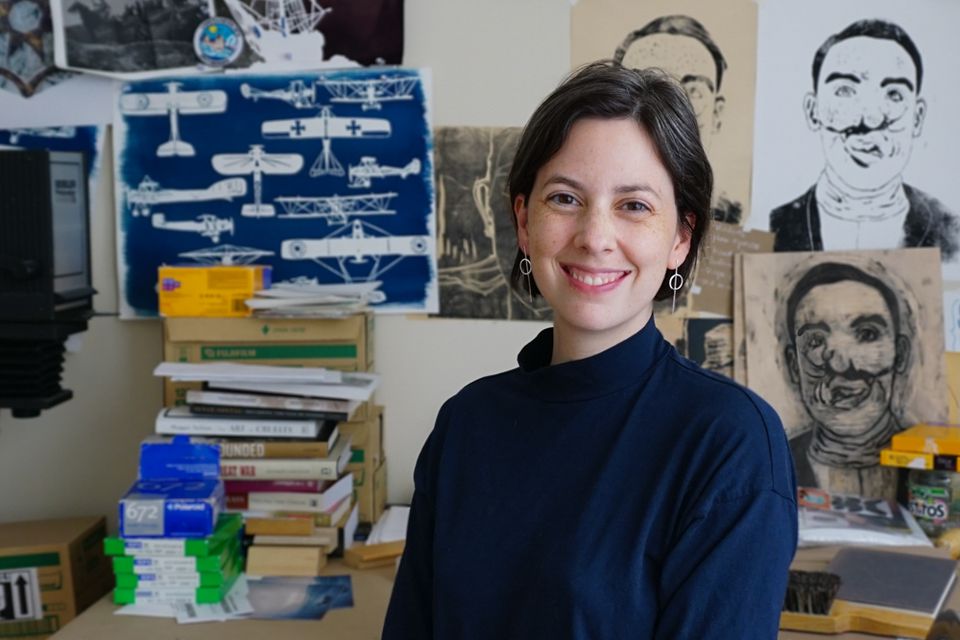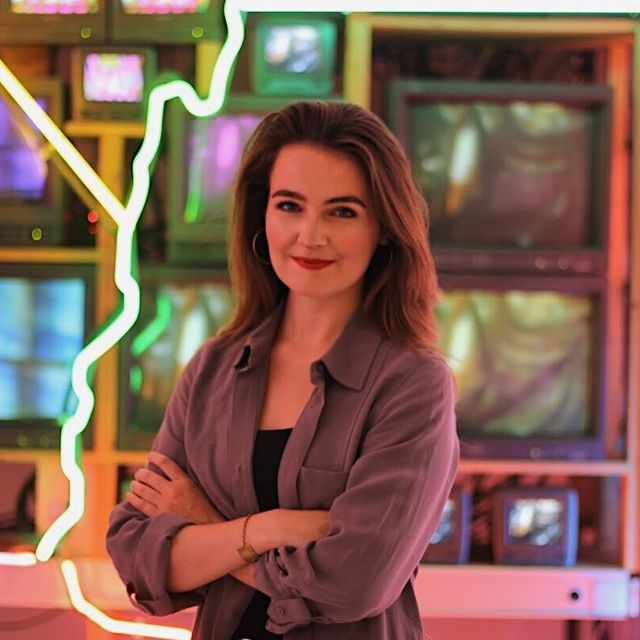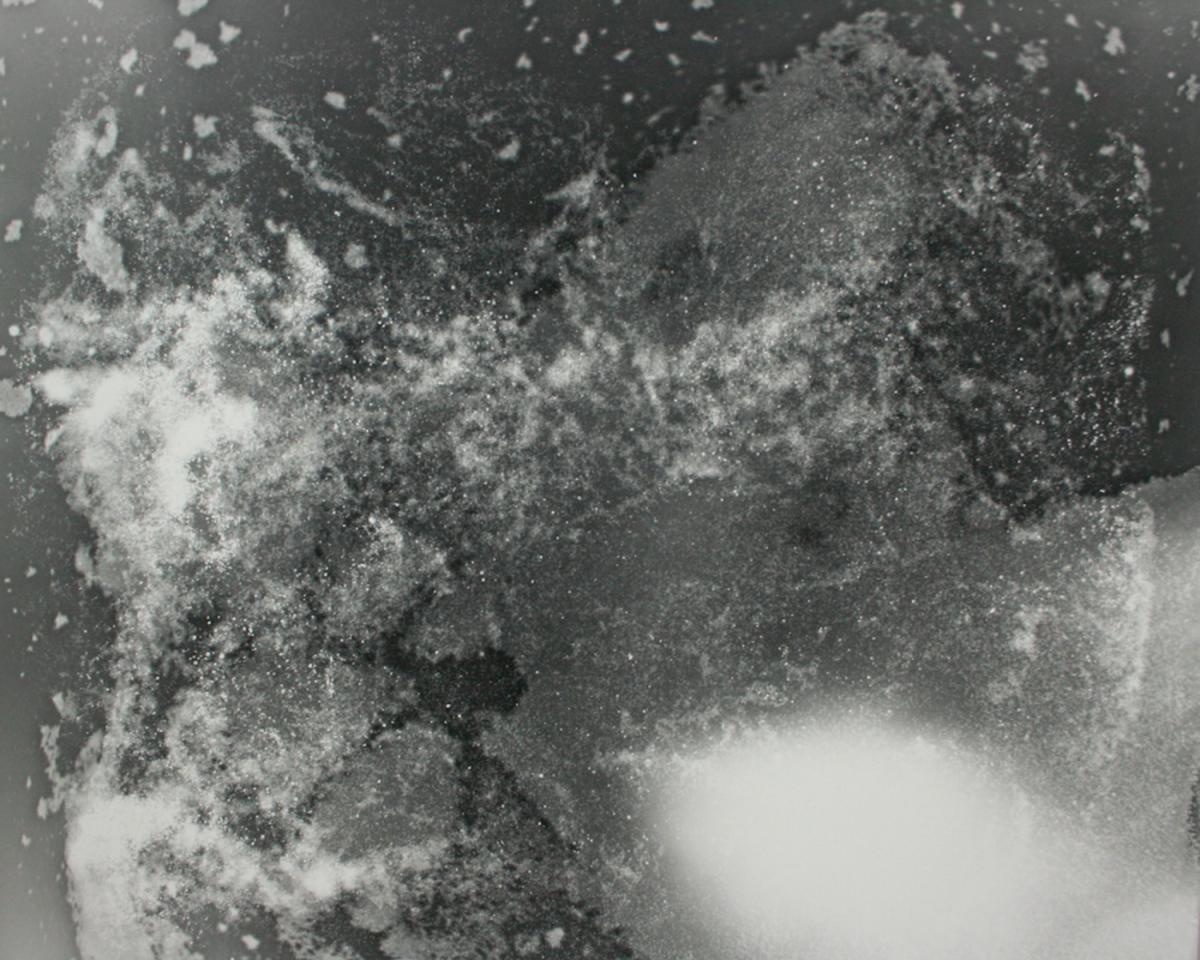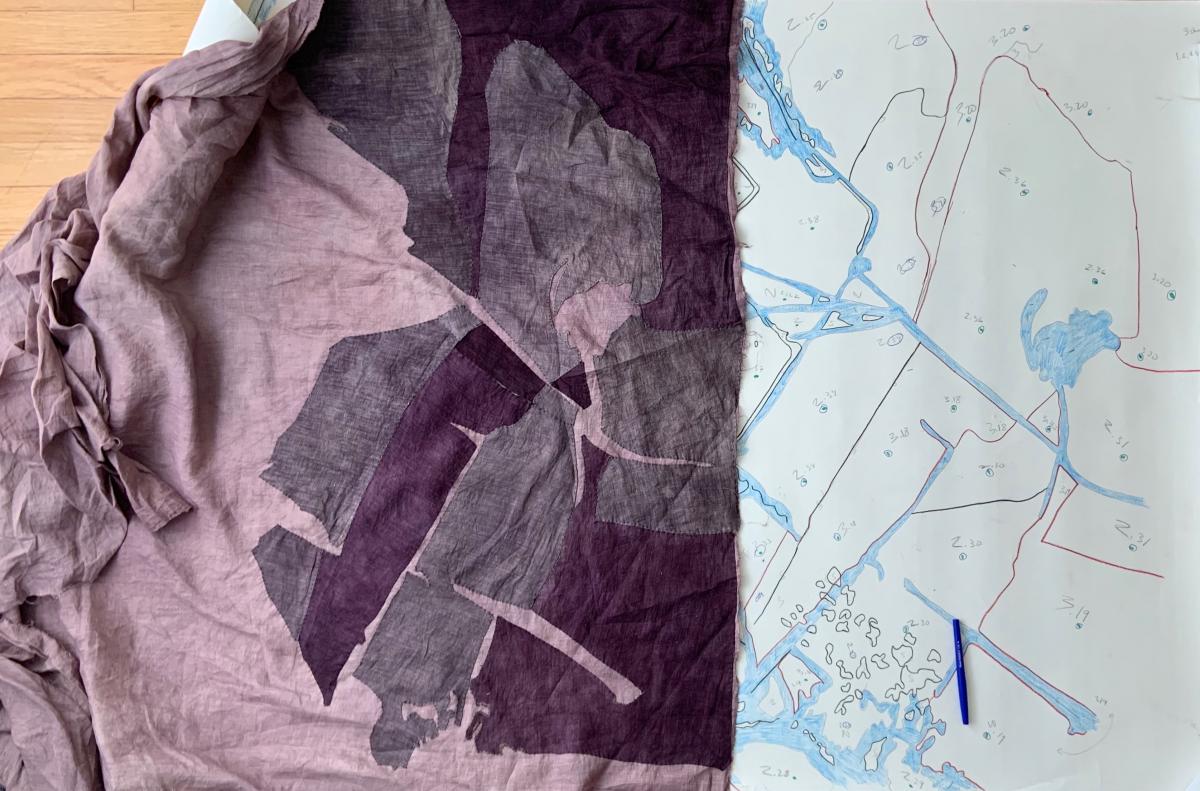
Katherine Akey in her studio in the District of Columbia. Photo courtesy of the artist.

Each month, the Luce Foundation Center at Smithsonian American Art Museum invites a local artist to give a talk and lead a hands-on activity in our Beyond the Studio Workshop series. On Sunday, February 9 from 1-3pm, teaching artist, Katherine Akey, will share her skills at the next installment of Beyond the Studio with an embroidery workshop. We asked Katherine to tell us a little about her creative process and her classes at Capitol Hill Arts Workshop (CHAW).
You’re a photographer, a bookmaker, and a fiber artist, to name just a few of your areas of expertise. How did you become a jack of all trades?
We live in a golden age of self-teaching. If there is a technique you want to learn, the internet can provide both resources to self-teach and quick connections to experts around the world. All you need is time and a willingness to practice. My approach to my art practice has always been really flexible; what is the best way to tell the story I am trying to tell? If I come across some new medium or technique that I feel like would bring something valuable to a piece, I seek it out. I also come from a very handy, craft-oriented family with roots in Appalachia, a culture that values self-reliance very highly. Learning to cook, sew, build, repair, garden—these foundational skills translate well to an art practice. Knowing how to budget and plan a project, how to problem solve as issues inevitably arise, and how to practice and approach new manual skills are all essentials for taking on new techniques and mediums.
Your website says that you “make work about polar exploration, World War I and early aviation.” Can you tell us a little bit more about that?
My work focuses on the transformation of human experience, especially that of trauma and conflict. Much of this is an exploration of the change of experience from history to myth, from mourning to commemorating. I always try to do this exploration through the experiences of individuals. Antoine de Saint-Exupéry wrote that when a man dies an unknown world dies with him; photographic archives as well as personal histories, these are what is left when that unknown world disappears, these are where we can connect to the humanity of the past. My childhood was spent climbing through archaeological sites with my parents; their academic practice is the foundation of how I make sense of the world, dusty sites and overflowing vitrines that fill my memory. Now as an artist I explore history with my own archaeological tools, seeking the marks of individuals as they transform and fade with time. It just so happens that there is an era in human history, from about 1870 to 1920, that I am particularly personally fascinated by. It is a time of incredibly rapid technological development, a last gasp of the 19th century, of romanticism, the world naively stumbling forward into modernity... I could talk about it, and WWI, in particular, forever. I’m just a history nerd at heart!
Tell us about your experience as a teaching artist at Capitol Hill Arts Workshop. How did you get involved? What’s your favorite thing about teaching there?
When I moved to DC in 2016, Capitol Hill Arts Workshop was in need of someone to manage their darkroom facilities and to teach its photography courses. It was kismet—there are not many public darkroom resources in the area and that is my most marketable skill. Teaching there is an incredible experience because of the breadth of our student body. I’ve gotten to teach passionate hobby photographers, adults who have never been in a darkroom before, and children as young as five. The children have been the most rewarding for me personally. They are growing up in an incredibly automated, digital world but they take to the slow, mechanical process of shooting and printing in the darkrooms incredibly naturally. I’m also really proud of our outreach into different segments of the community; we provide professional artists two different residency opportunities, we have a darkroom open to the general public, and we have collaborated with a number of local organizations to bring the arts into homeless shelters, prisons, and after school programs around the district.
What makes being an artist in DC special?
DC certainly struggles with some of the same challenges as other major cities when it comes to providing opportunity for artists; but I do think the art world that is here is passionate and has deep roots in the community. There are a lot of artist-run spaces and organizations in the city, and I’ve always been a fan of empowered artists empowering artists, to borrow a phrase. And you can’t overlook the incredible bounty of museums and archives available to us—for free—in the district and the surrounding area. I have a particularly archive-focused practice, so I enjoy that aspect of DC quite a bit.
What advice would you give to someone that wants to pursue a creative career?
I have so much advice I would give, but the big one is this: there is no work problem that can’t be solved by making more work. If you find yourself in a rut, with creative block, or feeling down on your output—make more work! It doesn’t have to be “good” work. It can be a sketch on a napkin, or a half hour of journaling. There is no win or fail in a creative practice, there is only making. Be relentless. A typical professional athlete or musician practices or trains for 5-6 hours a day. Artists should be doing that, too! Obviously, this becomes really challenging when you have a job and a family and other obligations, but as long as you keep making, keep practicing, keep watching movies and reading books—you’ll keep moving forward.
To learn more about the artist's work, check out Katherine Akey’s website or follow her on Instagram at @katherine.akey. Katherine’s workshop is sold out, but don't miss the rest of our Beyond the Studio Workshops featuring artists from Capitol Hill Arts Workshop, Abstract Orange, and the National Cherry Blossom Festival.




















